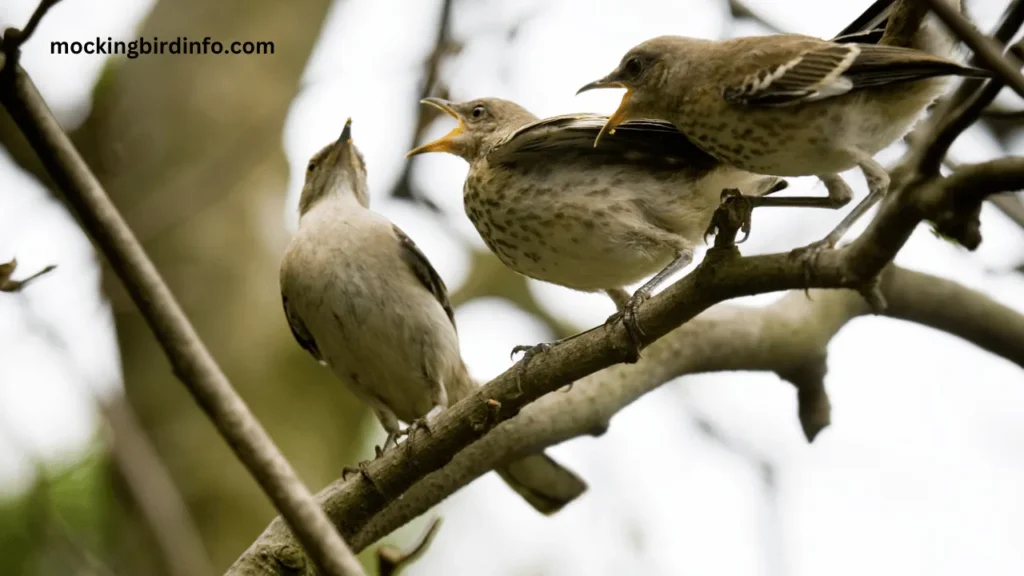Mockingbirds are a familiar sight, known for their melodic songs and adaptability. But one question often arises: do these skilled mimics migrate, or are they content with a stable home year-round?
This question isn’t just a curiosity; it carries implications for bird watchers, conservationists, and anyone captivated by the mysteries of bird behavior.
The reality is that mockingbird migration is a complex phenomenon. While some populations venture to warmer areas seasonally, others stay put, creating a fascinating mix of migratory and non-migratory habits within the same species.
Understanding what drives these behaviors sheds light on their adaptive strategies and resilience in changing climates.
In this post, we’ll explore the factors influencing migration, the patterns seen in different populations, and how climate change is altering their habits.
By the end, you’ll have a clearer understanding of why some mockingbirds migrate while others don’t, and why this matters to their survival and conservation.

Contents
Factors Influencing Migratory Behavior
Climate plays a significant role in whether a mockingbird migrates or remains sedentary. In colder regions, mockingbirds often move to find warmer temperatures and consistent food sources.
Conversely, populations in milder climates like the southern United States typically remain year-round due to stable conditions.
Geographic location is another crucial element. Mockingbirds residing in northern latitudes are more inclined to migrate than those found in southern or coastal areas.
This behavior aligns with the need to avoid harsh winters and scarcity of resources. Individual variation can lead to surprising differences within the same species.
Age and experience might determine whether a bird migrates, as younger birds are more prone to taking risks in search of better territories.
Similarly, sex-specific behaviors could influence migratory decisions, with male and female birds showing varied tendencies based on reproductive roles.
Migratory Patterns
Partial migration is a phenomenon where only some members of a population migrate, while others remain in place. This behavior is often seen in regions with unpredictable weather or where resources fluctuate seasonally.
It creates a unique dynamic where some birds test new territories while others maintain established ones. Irruptive migration refers to the irregular movement triggered by environmental pressures such as food shortages.
Unlike typical seasonal migrations, irruptive movements can be sudden and involve varying numbers of birds, depending on the severity of the situation.
Non-migratory populations are found predominantly in warmer climates where food and water are consistent. These mockingbirds are adept at surviving year-round, thanks to their ability to forage and adapt.
This stationary behavior is often observed in areas like Florida or Southern California, where natural resources are abundant.

Impact of Climate Change
Shifted migration patterns are becoming more noticeable as global temperatures rise. Warmer climates mean some birds migrate earlier or later than they used to, disrupting established seasonal patterns and making migration timing unpredictable.
Range expansion is another consequence, allowing mockingbirds to inhabit areas previously deemed too cold. This shift can lead to new territories becoming permanent homes, reflecting the birds’ adaptive nature but also presenting challenges to local ecosystems.
Habitat loss driven by climate change can severely affect mockingbird populations. With fewer suitable breeding and wintering areas, competition for resources increases, putting pressure on both migratory and non-migratory birds.
Research and Monitoring
Bird banding is an effective method used by researchers to track migration routes and behaviors. Each band provides valuable data about where birds travel, how long they stay, and what paths they prefer. This tool has been critical for understanding mockingbird migration.
Citizen science projects play a huge role in gathering data. Bird enthusiasts logging sightings and behaviors contribute to collective knowledge, offering a broader picture of migration trends. Initiatives like eBird empower the public to become involved in ongoing research.
Technological advancements such as geolocators and satellite tracking have revolutionized bird studies. These tools provide precise movement data, making it easier to understand complex migratory behaviors and predict future trends.
Conclusion
Mockingbird migration is a complex interplay of environmental, biological, and climate factors. While some populations are consistent migrants, others are opportunistically adaptive, highlighting the species’ resilience.
The shifting landscape of climate change introduces challenges but also showcases the ability of these birds to adapt and thrive in evolving conditions.
Understanding migration helps in conservation efforts, ensuring that the habitats they rely on remain protected. By studying their behaviors and movements, we appreciate not just their adaptability but the interconnectedness of our ecosystems.
As climate change continues to reshape the natural world, the story of the mockingbird stands as a testament to nature’s balance between constancy and change.
FAQs
Do all mockingbirds migrate?
No, not all mockingbirds migrate. Some populations are non-migratory, particularly in warmer climates.
2What triggers migration in mockingbirds?
Migration can be triggered by temperature changes, food availability, and other environmental factors.
3. Where do migratory mockingbirds go?
They often move south to warmer regions with more abundant resources during winter months.
4. Is climate change affecting mockingbird migration?
Yes, climate change impacts migration by shifting patterns and expanding or reducing available habitats.
5. What is partial migration?
It’s when only part of a population migrates, while others remain in place.
6. How do researchers track mockingbird migration?
They use bird banding, geolocators, and satellite tracking.







